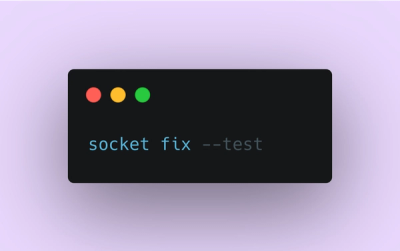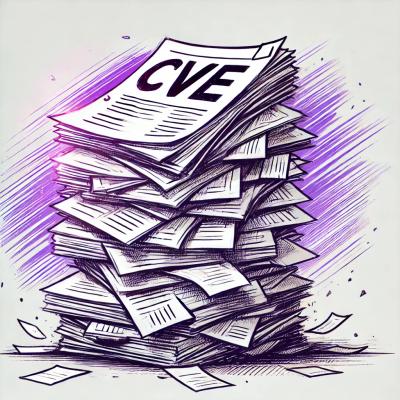
Product
Introducing Socket Fix for Safe, Automated Dependency Upgrades
Automatically fix and test dependency updates with socket fix—a new CLI tool that turns CVE alerts into safe, automated upgrades.
closestvector
Advanced tools
Get closest Number / Point / Vector / VectorN from an array and caches the previous get request/response paris.
npm install closestvector --save or yarn add closestvector
const Closest = require('closestvector');
const closest = new Closest([[255,0,0], [0,255,0], [0,0,255], [0,0,0]]);
closest.get([200,130,213]) // => [255,0,0]
if you wish to return every value only once:
const closest = new Closest([[255,0,0], [0,255,0], [0,0,255], [0,0,0]], true);
closest.get([200,130,213]) // => [255,0,0] closest Vector
closest.get([200,130,213]) // => [0,0,255] next closest Vector
closest.clearCache() // resets the returned elements
closest.get([200,130,213]) // => [255,0,0] closest Vector
const Closest = require('closestvector');
const closestVector = new Closest([[1,2],[222,6],[222,5],[222,4]]);
closestVector.get([255,255]) // => {"closest":[222,6],"index":1}
closestVector.get([2,5]) // => {"closest":[1,2],"index":0}
closestVector.get([64,12]) // => {"closest":[1,2],"index":0}
every vector can be retruned only once
const Closest = require('closestvector');
const closestUniqueVector = new Closest([[1,2],[222,6],[222,5],[222,4]], true);
closestUniqueVector.get([255,255]) // => {"closest":[222,6],"index":1}
closestUniqueVector.get([255,255]) // => {"closest":[222,5],"index":2}
closestUniqueVector.get([255,255]) // => {"closest":[222,4],"index":3}
closestUniqueVector.get([255,255]) // => {"closest":[1,2],"index":0}
closestUniqueVector.get([255,255]) // => Null (Out of entries to return)
closestUniqueVector.clearCache()
closestUniqueVector.get([255,255]) // => {"closest":[222,6],"index":1}
const Closest = require('closestvector');
const closestNumber = new Closest([10,3,10,45,30,120]);
closestNumber.get(10) // => {closest: 10, index: 0}
closestNumber.get(100) // => {closest: 120, index: 5}
closestNumber.get(100000) // => {closest: 120, index: 5}
closestNumber.get(1) // => {closest: 3, index: 1}
const Closest = require('closestvector');
const closestColor = new Closest([
[255,255,255],
[0,0,0],
[255,0,0],
[0,255,0],
[0,0,255],
[0,255,255],
[255,255,0]
]);
closestColor.get([0,192,200]) // => {"closest":[0,255,255],"index":5}
From the Wikipedia article on the subject:
The simplest solution to the NNS problem is to compute the distance from the query point to every other point in the database, keeping track of the "best so far". This algorithm, sometimes referred to as the naive approach, has a running time of O(Nd) where N is the cardinality of S and d is the dimensionality of M. There are no search data structures to maintain, so linear search has no space complexity beyond the storage of the database. Naive search can, on average, outperform space partitioning approaches on higher dimensional spaces.
ClosestVector is inspired by nearest-color and was rewritten to solve snapping to coordinates in a less specific way. As nearest-color it uses the naive approach and caches the requests made, so the diffing only happens if the vector is requested for the first time.
FAQs
returns the closest value / vector / vectorN from an array
We found that closestvector demonstrated a not healthy version release cadence and project activity because the last version was released a year ago. It has 1 open source maintainer collaborating on the project.
Did you know?

Socket for GitHub automatically highlights issues in each pull request and monitors the health of all your open source dependencies. Discover the contents of your packages and block harmful activity before you install or update your dependencies.

Product
Automatically fix and test dependency updates with socket fix—a new CLI tool that turns CVE alerts into safe, automated upgrades.

Security News
CISA denies CVE funding issues amid backlash over a new CVE foundation formed by board members, raising concerns about transparency and program governance.

Product
We’re excited to announce a powerful new capability in Socket: historical data and enhanced analytics.